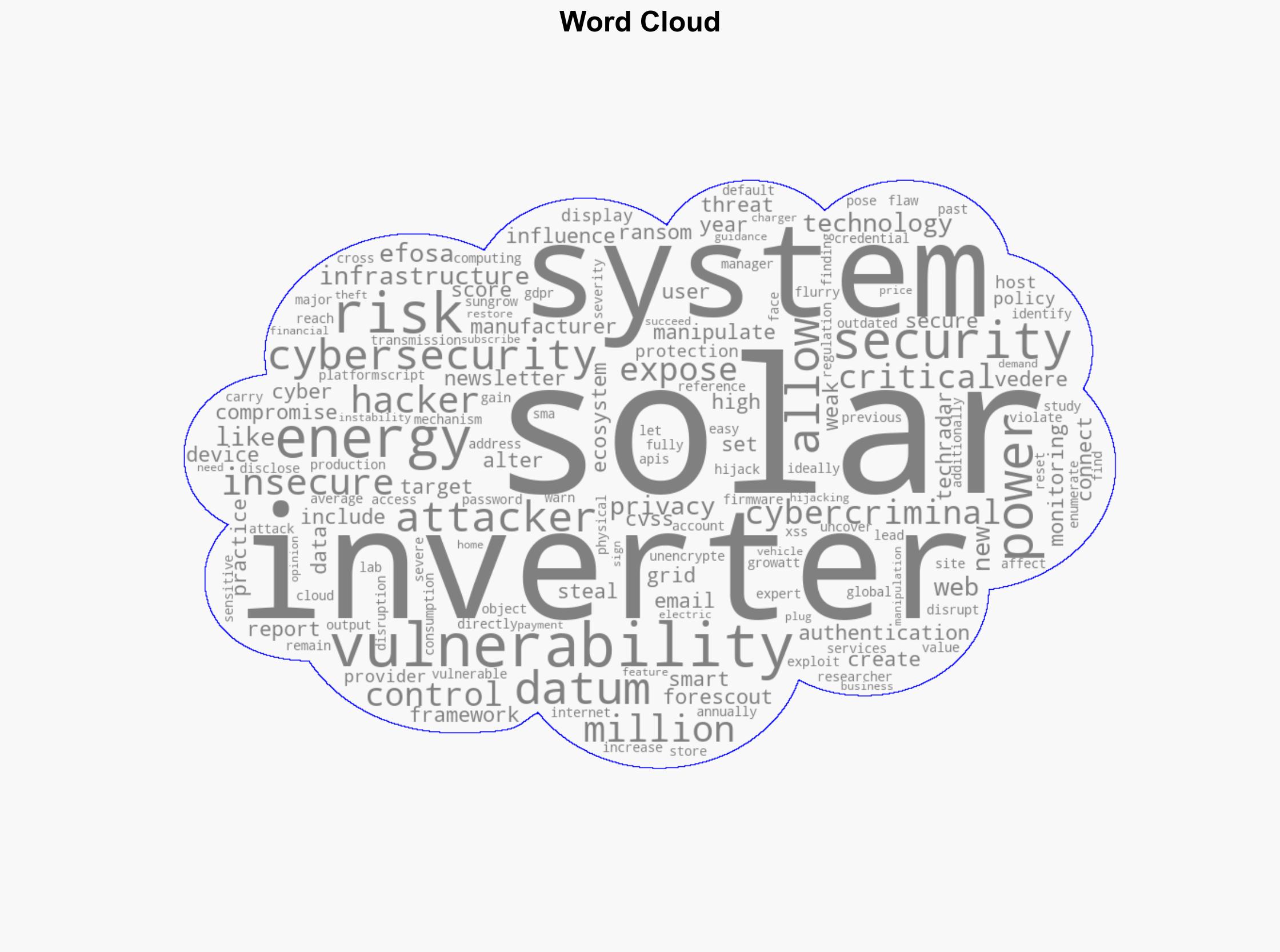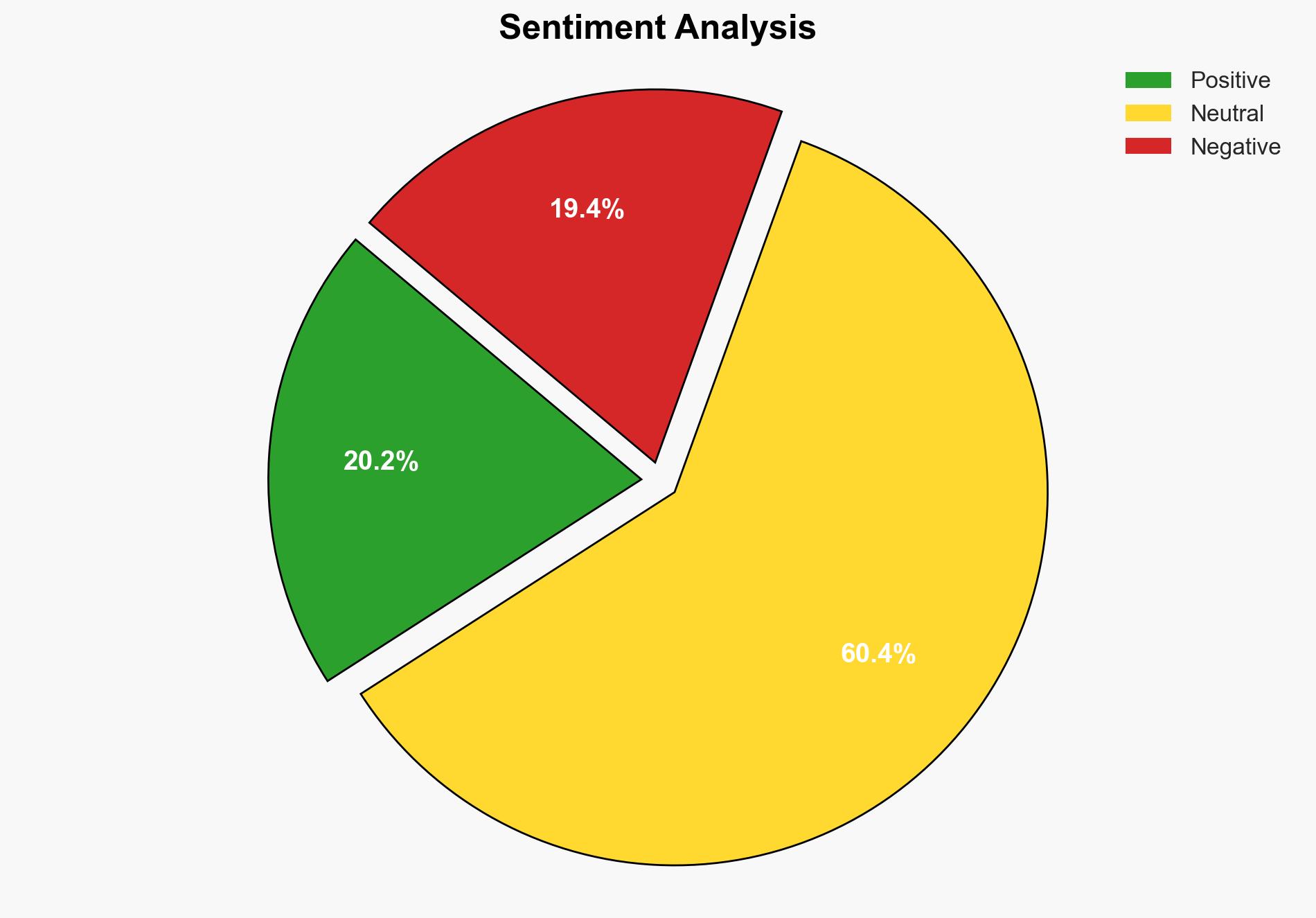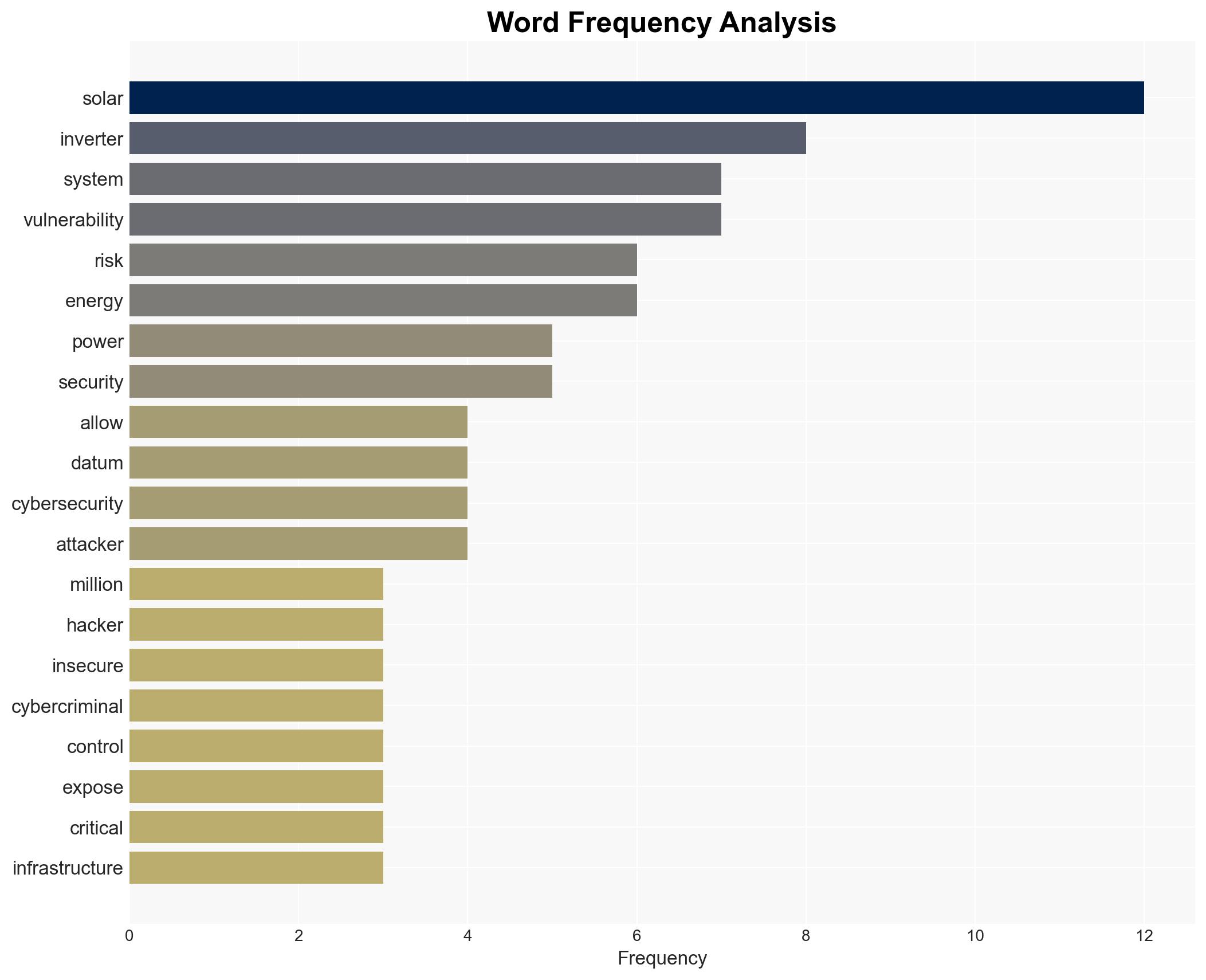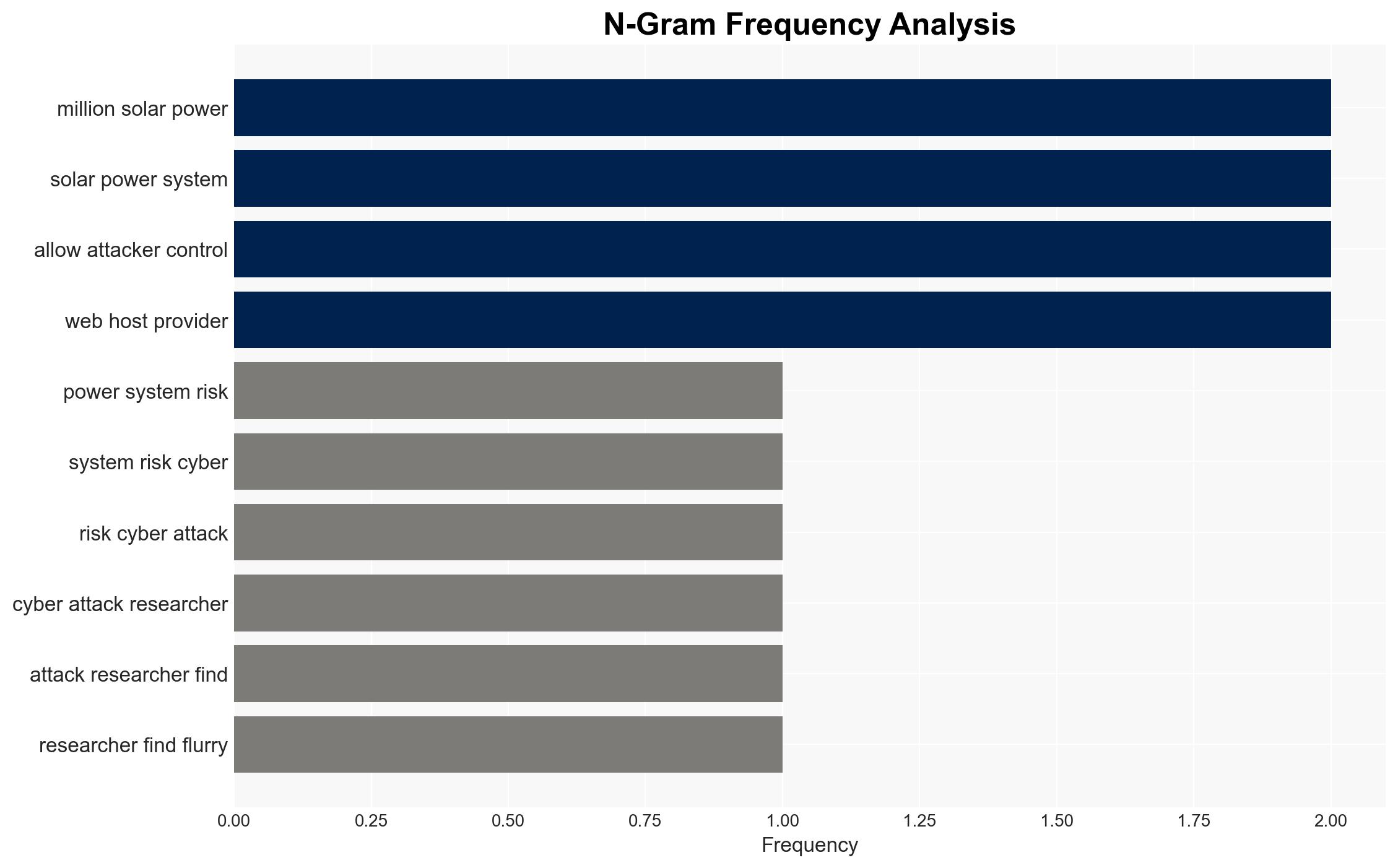Millions of solar power systems could be at risk of cyber attacks after researchers find flurry of vulnerabilities – TechRadar
Published on: 2025-03-30
Intelligence Report: Millions of Solar Power Systems at Risk of Cyber Attacks Due to Vulnerabilities – TechRadar
1. BLUF (Bottom Line Up Front)
Recent research has identified critical vulnerabilities in millions of solar power systems, posing a significant cybersecurity threat. These vulnerabilities could allow cybercriminals to hijack inverters, alter energy outputs, and steal sensitive data. Immediate action is required to patch these vulnerabilities and enhance security measures to protect the global energy infrastructure.
2. Detailed Analysis
The following structured analytic techniques have been applied for this analysis:
General Analysis
Researchers have uncovered a series of vulnerabilities in solar power systems, particularly affecting inverters from major manufacturers such as Sungrow, Growatt, and SMA. These vulnerabilities include weak authentication protocols, outdated firmware, and unencrypted data transmission. The flaws allow attackers to gain control over solar systems, manipulate energy production, and disrupt power grids. Additionally, these vulnerabilities expose user data, violating privacy regulations such as GDPR.
The vulnerabilities have been assigned high critical severity scores, indicating the potential for full system compromise. The direct internet connectivity of solar inverters makes them easy targets for cybercriminals, who can exploit these weaknesses to demand ransoms or manipulate energy prices.
3. Implications and Strategic Risks
The identified vulnerabilities pose significant risks to national security, regional stability, and economic interests. The potential for grid instability and data theft could lead to financial manipulation and compromise of smart home systems. The manipulation of energy production and pricing could have far-reaching impacts on global energy markets and infrastructure.
4. Recommendations and Outlook
Recommendations:
- Manufacturers should prioritize patching vulnerabilities, adopting secure coding practices, and conducting regular penetration testing.
- Implement web application firewalls and adhere to cybersecurity frameworks such as NIST to mitigate risks.
- Regulators should classify solar inverters as critical infrastructure and enforce security standards like ETSI EN.
- Solar system owners should secure installations by isolating devices on separate networks and enabling security monitoring.
Outlook:
In the best-case scenario, rapid implementation of security measures could mitigate risks and prevent exploitation. In the worst-case scenario, failure to address vulnerabilities could lead to widespread disruptions and economic losses. The most likely outcome involves a gradual improvement in security posture as stakeholders implement recommended measures.
5. Key Individuals and Entities
The report mentions significant manufacturers such as Sungrow, Growatt, and SMA. Additionally, Forescout Vedere Labs is highlighted for their role in uncovering these vulnerabilities.




